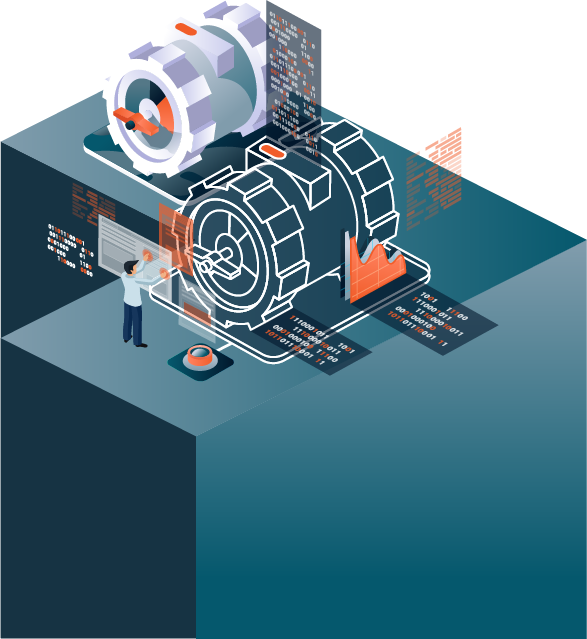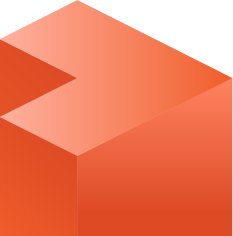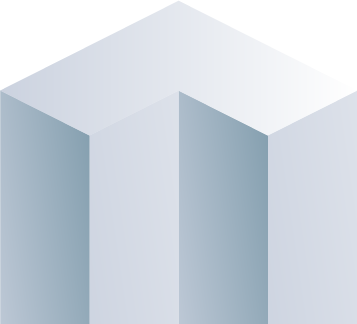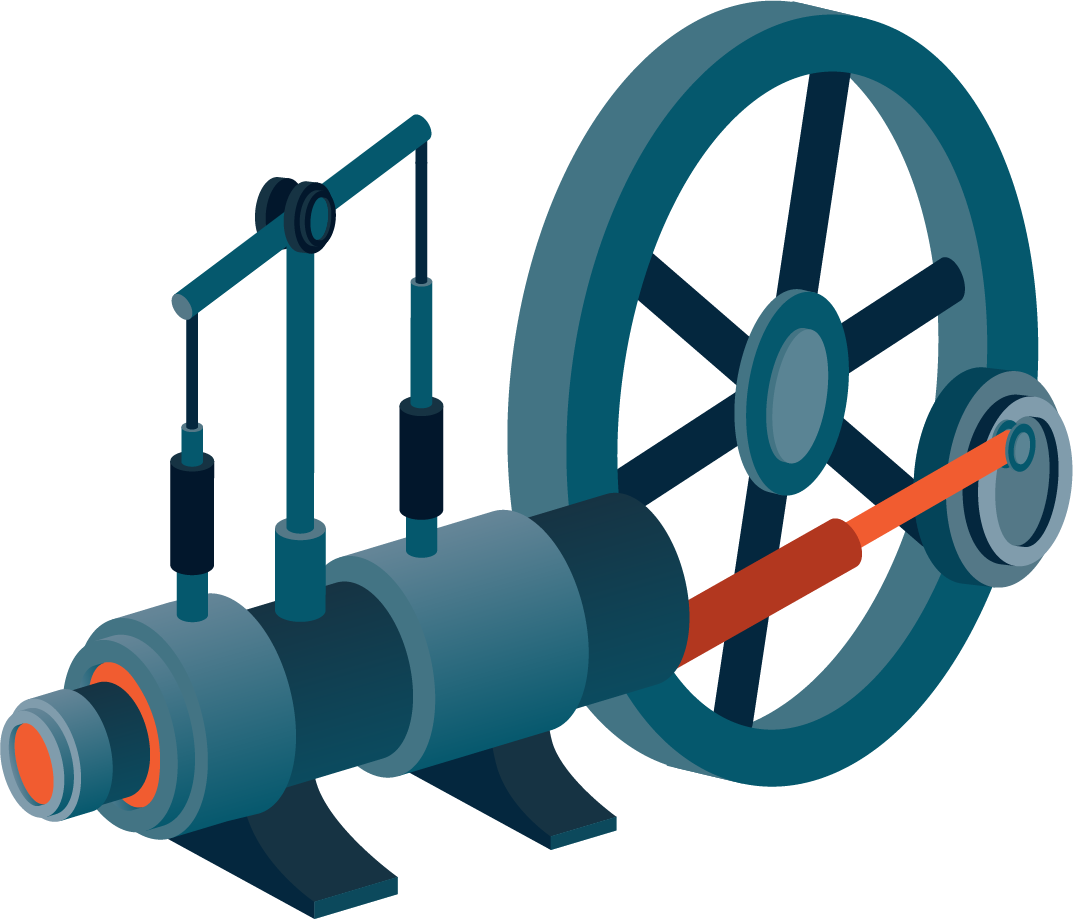Mechanisation and the introduction of steam and water power




What Drives Digital Transformation?
We like to provide some clarity around digital transformation while answering some common questions
Digital technologies have profoundly impacted our personal lives, the way we work, and society at large. The pace of changes continues to accelerate, reshaping businesses, entire industries, and economies. There is no single definition that accurately encompasses all the dimensions of digital change. Digital Transformation (DX or DT) refers to the cultural, organizational, and operational changes that can affect not just companies and disruptive competition, but also the regulatory environment and societal shifts as well.
Digital transformation is imperative for all businesses, from the small to the enterprise. During the past two decades the emergence is clear and the path inexorable. Now, only the speed of change matters and their effect on individual companies and markets.
Digital transformation is a massive undertaking, especially for larger, established companies. When done right, it will produce a business that is more aligned with customer demands and resilient in the fast-moving digital future.
At Momenta, we use the term Digital Industry to reflect the dynamism of Digital Transformation in an industrial context.
Digital Industry is about creating value in new ways. For some companies, digital is about:
In short, the Industrial Internet of Things (IIoT) is a growing infrastructure that underpins modern economies. It is an essential element in any firm’s plan for strategy and execution. The strengths include greater visibility into operations and a quantitative basis for decision-making across all dimensions of manufacturing and the supply chain.
Although digital transformation will vary widely based on the organization’s specific challenges and demands, there are a few constants and common themes among existing case studies and published frameworks that all business and technology leaders should consider as they embark on digital transformation.
For instance, these digital transformation elements are often cited:
Industry 4.0 (also referred to as The Fourth Industrial Revolution) encompasses the intertwined digital and technological advancement of industrial sectors and organizations. Key to the development of Industry 4.0 is the proliferation of IoT and IIoT.
Mechanisation and the introduction of steam and water power
Mass production assembly lines using electrical power
Automated production Computers. IT systems And robotics
The Smart Factory Autonomous Systems IoT machine learning
There are a number of shifting definition of DX (Digital Transformation), but the definition from Agile Elephant captures the gist of it: “Digital transformation is the process of shifting your organization from a legacy approach to new ways of working and thinking using digital, social, mobile and emerging technologies. It involves a change in leadership, different thinking, the encouragement of innovation and new business models, incorporating digitization of assets and an increased use of technology to improve the experience of your organization’s employees, customers, suppliers, partners and stakeholders.”
The Internet of Things (IoT) is a computing concept that describes the idea of everyday physical objects being connected to the internet and being able to identify themselves to other devices. The IoT is significant because an object that can represent itself digitally becomes something greater than the object by itself. No longer does the object relate just to its user, but it is now connected to surrounding objects and database data. When many objects act in unison, they are known as having "ambient intelligence.".
The Industrial IoT (IIoT) involves applying the connectivity of standard IoT in the context of industrial operations. The use of IIoT in large-scale industrial scenarios offers revolutionary capabilities and benefits to enterprises, potentially transforming entire industries. Asset monitoring, predictive maintenance, and equipment safety are notable areas of value creation powered by IIoT. The IIoT is a major force in the integration of Information Technology (IT) and Operational Technology (OT) systems.
According to Gartner, Digitalization is the use of digital technologies to change a business model and provide new revenue and value-producing opportunities; it is the process of moving to a digital business. Digital Transformation involves the use of digital technologies to advance new business models and re-imagine processes, through the use of technologies such as cloud computing, mobile connectivity, and Big Data analytics. For traditional Industry, this involves the additional dimension of integrating operational technology with information technology.
The role of Chief Digital Officer is focused on creating and implementing an organization's overall digital strategy. The primary goal is to strengthen the relationship between data and customers, and to advance the adoption of digital strategy across multiple levels of the organization. The role of the CDO bridges technology, line of business and corporate strategy with the aim of advancing use of digital technologies to improve the customer experience.
The core aims of Digital Strategy focus on using technologies to improve business performance. This may involve creating new products and services or transforming existing ones. A comprehensive Digital Strategy outlines how an organization can use technologies to create incremental value, increase their competitive advantage, and identify tactics to achieve their business goals. It explores new growth opportunities, business models, enhanced collaboration with stakeholders, and more efficient processes.
The nature of connectivity is also changing. On one hand, high-speed internet connectivity has become increasingly available and, on the other, low-power wide-area networks (LPWAN) such as LoRa enable wireless sensors with multi-year batter life. The former creates new opportunities to transition more business functions online and the latter enables new models for sensing/control. For industrial enterprises, digitalizing asset-intensive processes provide game-changing benefits enabled by ubiquitous connectivity.
Mergers and Acquisitions play an essential role in the digital organization’s strategic tool kit. Types of M&A rationales range from incremental tech and talent tuck-ins, to consolidation for market scale, to market adjacencies to business transformational deals.
Ecosystems are an important aspect of Digital Industry. Such ecosystems include a wide variety of participants with varied roles. This includes customers, employees, suppliers, technology providers, industry consortia, and even local/state governments.
Industry 4.0 (also referred to as The Fourth Industrial Revolution) encompasses the intertwined digital and technological advancement of industrial sectors and organizations. Key to the development of Industry 4.0 is the proliferation of IoT and IIoT.

Mechanisation and the introduction of steam and water power
Mass production assembly lines using electrical power
Automated production Computers. IT systems And robotics
The Smart Factory Autonomous Systems IoT machine learning
There are a number of shifting definition of DX (Digital Transformation), but the definition from Agile Elephant captures the gist of it: “Digital transformation is the process of shifting your organization from a legacy approach to new ways of working and thinking using digital, social, mobile and emerging technologies. It involves a change in leadership, different thinking, the encouragement of innovation and new business models, incorporating digitization of assets and an increased use of technology to improve the experience of your organization’s employees, customers, suppliers, partners and stakeholders.”
The Internet of Things (IoT) is a computing concept that describes the idea of everyday physical objects being connected to the internet and being able to identify themselves to other devices. The IoT is significant because an object that can represent itself digitally becomes something greater than the object by itself. No longer does the object relate just to its user, but it is now connected to surrounding objects and database data. When many objects act in unison, they are known as having "ambient intelligence.".
The Industrial IoT (IIoT) involves applying the connectivity of standard IoT in the context of industrial operations. The use of IIoT in large-scale industrial scenarios offers revolutionary capabilities and benefits to enterprises, potentially transforming entire industries. Asset monitoring, predictive maintenance, and equipment safety are notable areas of value creation powered by IIoT. The IIoT is a major force in the integration of Information Technology (IT) and Operational Technology (OT) systems.
According to Gartner, Digitalization is the use of digital technologies to change a business model and provide new revenue and value-producing opportunities; it is the process of moving to a digital business. Digital Transformation involves the use of digital technologies to advance new business models and re-imagine processes, through the use of technologies such as cloud computing, mobile connectivity, and Big Data analytics. For traditional Industry, this involves the additional dimension of integrating operational technology with information technology.
The role of Chief Digital Officer is focused on creating and implementing an organization's overall digital strategy. The primary goal is to strengthen the relationship between data and customers, and to advance the adoption of digital strategy across multiple levels of the organization. The role of the CDO bridges technology, line of business and corporate strategy with the aim of advancing use of digital technologies to improve the customer experience.
The core aims of Digital Strategy focus on using technologies to improve business performance. This may involve creating new products and services or transforming existing ones. A comprehensive Digital Strategy outlines how an organization can use technologies to create incremental value, increase their competitive advantage, and identify tactics to achieve their business goals. It explores new growth opportunities, business models, enhanced collaboration with stakeholders, and more efficient processes.
The nature of connectivity is also changing. On one hand, high-speed internet connectivity has become increasingly available and, on the other, low-power wide-area networks (LPWAN) such as LoRa enable wireless sensors with multi-year batter life. The former creates new opportunities to transition more business functions online and the latter enables new models for sensing/control. For industrial enterprises, digitalizing asset-intensive processes provide game-changing benefits enabled by ubiquitous connectivity.
Mergers and Acquisitions play an essential role in the digital organization’s strategic tool kit. Types of M&A rationales range from incremental tech and talent tuck-ins, to consolidation for market scale, to market adjacencies to business transformational deals.
Ecosystems are an important aspect of Digital Industry. Such ecosystems include a wide variety of participants with varied roles. This includes customers, employees, suppliers, technology providers, industry consortia, and even local/state governments.
- Cloud Computing is the on-demand usage of computing resources, both hardware and software, delivered as a service. This allows for the consumption of such resources without direct management by the user. It relies on shared resources to deliver economies of scale and is often delivered in a "pay-as-you-go" model. A particular cloud can be private to an organization, public, or a hybrid of the two. Examples include Amazon Web Services and Microsoft Azure.
Edge Computing is a distributed computing model whereby computation and storage are brought close to the location where it is needed. This is done to improve response times, reduce bandwidth, and improve availability. Examples include Content Delivery Networks, industrial gateways, and embedded PC/servers.
Big Data refers to the usage of larges sets of data that are analyzed through one or more algorithms to reveal patterns and associations. It is characterized by data that are too large or too complex for traditional database systems. Hadoop and Spark are two tools commonly used in a Big Data solution.
Artificial Intelligence (AI) and Machine Learning (ML) use algorithms that build a mathematical model based on sample data, also called training data. Such systems perform specific tasks based on inference vs. explicit programming (as is common with traditional algorithms). While Artificial Intelligence and Machine Learning are distinct but related concepts, they are generally discussed together in the context of IoT. Neural Networks, TensorFlow, Python, and Rare tools commonly used in AI/ML systems.
Communications, or telecommunications, is the ability to transfer information over long distances. In general, such communications is digital in nature although the underlying medium is always an analog form (e.g. radio signals). Networks enable communication to occur between multiple parties. Examples of communication technologies include Ethernet, Wi-Fi, cellular (2G/3G/4G/5G), satellite, and LPWAN.
Low-Power, Wide-Area Networking (LPWAN) is a type of telecommunications technology that allows for communications over long distances (many kilometers) using very low power radios. This enables devices to communicate while using very low power and, thus, achieving very long battery life. Examples of LPWAN include LoRa and Narrowband IoT (NB-IoT).
Cybersecurity refers to the concept monitoring and protecting systems from unauthorized access. It also refers to remediation actions taken when intrusions have occurred. Cybersecurity is a broad field that includes such practices as vulnerability analysis, access and intrusion monitoring, static code analysis, coding standards and practices, encryption, etc.
Augmented Reality (AR) is a technology that superimposes computer-generated images over the real world. In such systems, the user's perception of the world is a mix of real and artificial constructs. Virtual Reality (VR) is similar except the user is fully immersed in a computer-generated environment. The most common form of AR/VR today involve VR headsets such as Microsoft's HoloLens or Oculus.
Blockchain refers to digital ledger that is composed of records, called blocks, that are linked together cryptographically. Blockchains are generally integrated into a peer-to-peer networks which leverage consensus protocols to validate blocks without a central authority. Blockchains are used to provide assurances of validity in distributed fashion. The most commonly known example of a blockchain is the Bitcoin cryptographic currency. Uses for blockchain include supply chain management and micro-transaction settlement.
- Cloud Computing is the on-demand usage of computing resources, both hardware and software, delivered as a service. This allows for the consumption of such resources without direct management by the user. It relies on shared resources to deliver economies of scale and is often delivered in a "pay-as-you-go" model. A particular cloud can be private to an organization, public, or a hybrid of the two. Examples include Amazon Web Services and Microsoft Azure.
Edge Computing is a distributed computing model whereby computation and storage are brought close to the location where it is needed. This is done to improve response times, reduce bandwidth, and improve availability. Examples include Content Delivery Networks, industrial gateways, and embedded PC/servers.
Big Data refers to the usage of larges sets of data that are analyzed through one or more algorithms to reveal patterns and associations. It is characterized by data that are too large or too complex for traditional database systems. Hadoop and Spark are two tools commonly used in a Big Data solution.
Artificial Intelligence (AI) and Machine Learning (ML) use algorithms that build a mathematical model based on sample data, also called training data. Such systems perform specific tasks based on inference vs. explicit programming (as is common with traditional algorithms). While Artificial Intelligence and Machine Learning are distinct but related concepts, they are generally discussed together in the context of IoT. Neural Networks, TensorFlow, Python, and Rare tools commonly used in AI/ML systems.
Communications, or telecommunications, is the ability to transfer information over long distances. In general, such communications is digital in nature although the underlying medium is always an analog form (e.g. radio signals). Networks enable communication to occur between multiple parties. Examples of communication technologies include Ethernet, Wi-Fi, cellular (2G/3G/4G/5G), satellite, and LPWAN.
Low-Power, Wide-Area Networking (LPWAN) is a type of telecommunications technology that allows for communications over long distances (many kilometers) using very low power radios. This enables devices to communicate while using very low power and, thus, achieving very long battery life. Examples of LPWAN include LoRa and Narrowband IoT (NB-IoT).
Cybersecurity refers to the concept monitoring and protecting systems from unauthorized access. It also refers to remediation actions taken when intrusions have occurred. Cybersecurity is a broad field that includes such practices as vulnerability analysis, access and intrusion monitoring, static code analysis, coding standards and practices, encryption, etc.
Augmented Reality (AR) is a technology that superimposes computer-generated images over the real world. In such systems, the user's perception of the world is a mix of real and artificial constructs. Virtual Reality (VR) is similar except the user is fully immersed in a computer-generated environment. The most common form of AR/VR today involve VR headsets such as Microsoft's HoloLens or Oculus.
Blockchain refers to digital ledger that is composed of records, called blocks, that are linked together cryptographically. Blockchains are generally integrated into a peer-to-peer networks which leverage consensus protocols to validate blocks without a central authority. Blockchains are used to provide assurances of validity in distributed fashion. The most commonly known example of a blockchain is the Bitcoin cryptographic currency. Uses for blockchain include supply chain management and micro-transaction settlement.
If you cannot find a term you are looking for, we suggest that you have a look at the Industrial Internet Vocabulary Technical Report provided by the Industrial Internet Consortium.
Momenta’s core business is to help industrial enterprises master how to generate business value and reap the benefits from digital technology. We enable clients to understand the technology landscape and harness the best use of new tools available. Our practitioners are positioned deep within Digital Industry which enables us to deliver exceptional advisory services, M&A guidance, executive search, and venture investments.
Leading Industry thinkers and innovators & Momenta’s Practitioners share their strategies and perspectives on Digital Transformation.
Be among the first to get latest Digital Industry
News & Insights from Momenta Partners.